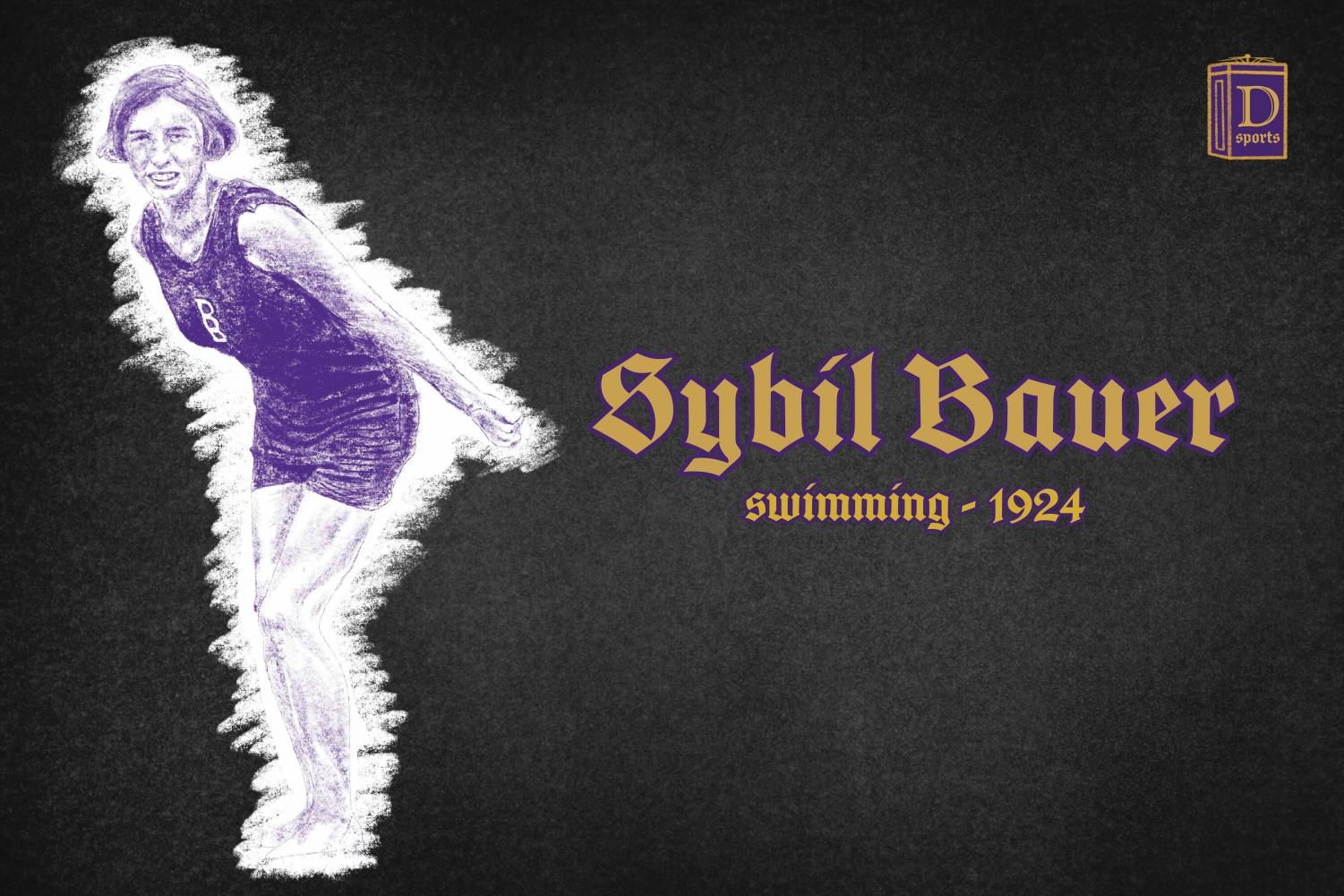Northwestern Sports Time Machine: Sybil Bauer, 1924
June 15, 2020
This article is part of the Northwestern Time Machine series, where The Daily’s sports writers look into great individual seasons by Northwestern athletes.
Sybil Bauer was so dominant that she made world records obsolete.
Every time she jumped in a swimming pool, she had a shot at shattering the previous marks. And many times, she did. It became such a recurring theme that Walter Paulison, the 1923-24 Sporting Editor of The Daily, sometimes didn’t even put the accomplishments in the paper.
“Shucks, I can’t be bothered!” Paulison said. “She breaks a record about twice a week all the time!”
Bauer was not just the best in the world at the backstroke, but was also an enigma that changed athletics. She won six straight AAU titles in the 100-yard backstroke. She won an Olympic gold medal. In 1922, she became the first woman in recorded history to beat a men’s world record, an accomplishment no one else has been known to do since.
Of all the selections for the Northwestern Sports Time Machine, Bauer involves the biggest bending of the rules. When she attended Northwestern, there were no intercollegiate varsity women’s sports teams. There was a Women’s Athletic Association, of which Bauer was a key member, but that was for intramural competition only. So when she attended big swim meets, she attended as a member of the Illinois Athletic Club.
But the point of this exercise is not to be bogged down by arbitrary rules. It is to be reminded and inspired by some of the greatest athletic feats in Northwestern history. And going back to watch her during the 1924 calendar year would be a mesmerizing experience.
Bauer — already the world record holder in every backstroke event — started her banner year by helping the sophomore women’s swimming team defeat the junior and senior team in the WAA interclass swimming competition. She won each race she swam, and even broke a Patten Gym record in a relay. From there, she just kept winning and breaking records.
On January 19, Bauer broke her 75-yard backstroke record by five seconds and also broke her 100-yard backstroke record. The next day, she broke her new 100-yard backstroke mark again, this time by more than two seconds. At a February event in Miami, Bauer broke backstroke records in seven different lengths over a five-day span. She once again broke the 100-yard backstroke record at the Central AAU championships in March, and then broke two more records in Chicago six days later. Later that month, Bauer claimed her fourth-straight National AAU championship in the 100-yard backstroke.
Bauer’s wins were so commanding that it sparked a discussion if she should compete with the men at the Olympics. Her coach at IAC told the Washington Post in February that “a determined effort will be made by prominent Chicago sportsmen” to have Bauer compete in the men’s backstroke events.
Whatever happened with those efforts is unknown. But when Bauer went to the Olympic Trials in June, she only competed against women. And she one again dominated, breaking her record in the 100-yard backstroke again and securing her spot to represent the Red, White and Blue.
The 1924 Olympics were held in Paris, and was the first to feature a women’s backstroke event. In typical Bauer fashion, she dazzled the crowds in France. After waiting about a month for her time to shine, Bauer cruised to a win in her semifinal heat of the 100-meter backstroke, lowering her world record once again. The next day, she won the gold medal in the event, and even managed to best her mark from the day before by about one second.
Bauer participated in a few other swim events after the Olympics, the most notable of which was an event in Long Island where she won the National AAU 220-yard backstroke championship by six seconds.
While Bauer’s swimming career was time-consuming, she was able to participate in a lot of other activities. On campus, she served in multiple organizations, including the WAA. In addition to serving as the WAA swim team manager, she was also a member of the organization’s board.
And she didn’t just dominate the WAA swimming events. Bauer was an all-around athlete. She also played golf and field hockey in 1924 and had previously played basketball. In field hockey, she played half back and was named to the school All-Star team at the end of the season. Bauer ended the calendar year with another incredible accomplishment: receiving a purple “N” from the WAA, which was given to only the most accomplished women in the organization.
This summation of her accomplishments in 1924 is a solid representation of Bauer’s greatness in the pool, but it still isn’t a complete picture. Bauer was regarded as one of the most graceful and kind athletes of the era. She was a leader on campus, and a major proponent of women’s athletics. And when she died of cancer in 1927 at the age of 23, it broke the hearts of people across the world.
To be able to go back and watch that 1924 season would not just be an opportunity to witness greatness, but a chance to appreciate a superstar whose career was tragically cut short.
And while Paulison might not have grown accustomed by Bauer’s record breaking, I wouldn’t take those world records for granted.
Email: peterwarren2021@u.northwestern.edu
Twitter: @thepeterwarren

